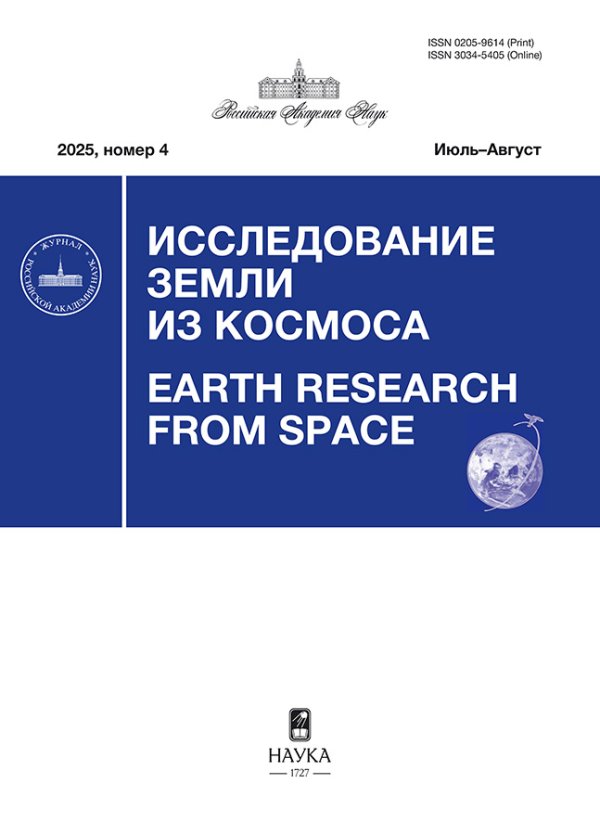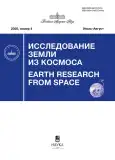Earth Research from Space
Media registration certificate: ПИ № ФС 77 - 66709 от 28.07.2016
Founder: Russian Academy of Sciences
Editor-in-Chief: Bondur Valery G., academician RAS, Doctor of Sc., Full Professor
Frequency / Access: 6 issues per year / Subscription
Included in: White list (3rd level), Higher Attestation Commission list, RISC, Scopus
Current Issue
No 4 (2025)
ИСПОЛЬЗОВАНИЕ КОСМИЧЕСКОЙ ИНФОРМАЦИИ О ЗЕМЛЕ
Registering Changes in the Prognostic Parameters of the 2024 Kamchatka M = 5.0–7.0 Earthquakes from Space
Abstract
 3-24
3-24


Vegetation Response in the Tundra, Forest-Tundra, and Taiga Zones of Western Siberia to Climate Changes in 2000–2022 According to Satellite Data
Abstract
 25-36
25-36


Forest Reclamation Mapping of Arid Pastures on the Example of the Eastern Regions of Stavropol Region
Abstract
 38-51
38-51


МЕТОДЫ И СРЕДСТВА ОБРАБОТКИ И ИНТЕРПРЕТАЦИИ КОСМИЧЕСКОЙ ИНФОРМАЦИИ
The Problem of Automatic Identification of Leads In the Sea Ice Cover from Satellite Images
Abstract
 52-61
52-61


Geoinformation Modelling of Changes in Natural Landscapes in the Southern Cryolithozone of Western Siberia Based on Landsat Satellite Images
Abstract
 62-72
62-72


Lagrangian Analysis of Satellite Data for the Pacific Cod Biomass Estimation in the West Bering Sea Zone
Abstract
 73-93
73-93


ФИЗИЧЕСКИЕ ОСНОВЫ ИССЛЕДОВАНИЯ ЗЕМЛИ ИЗ КОСМОСА
Method and Procedures of Aerospace Thermal Tomography of Near-Surface Areas of the Earth
Abstract
 94-104
94-104












